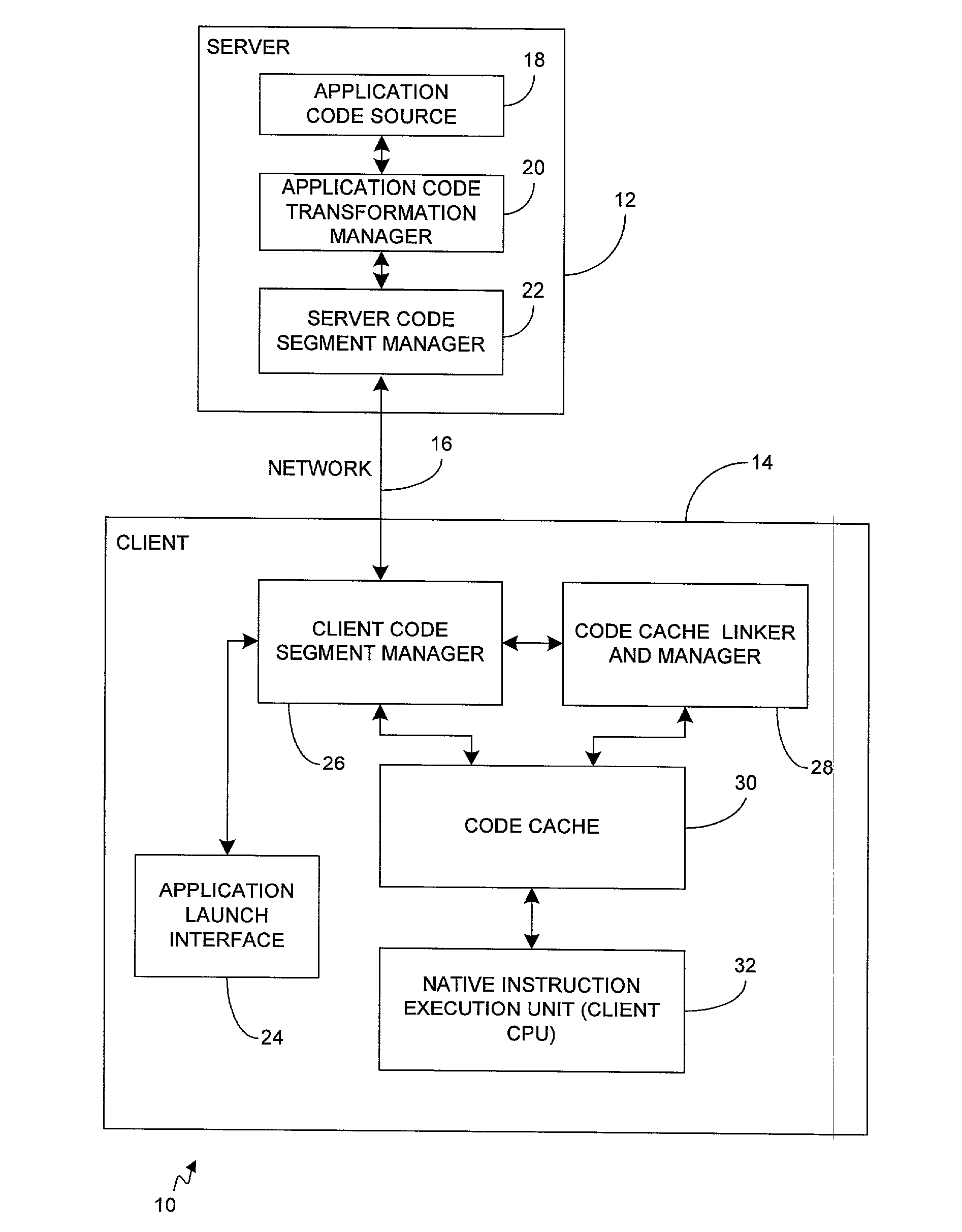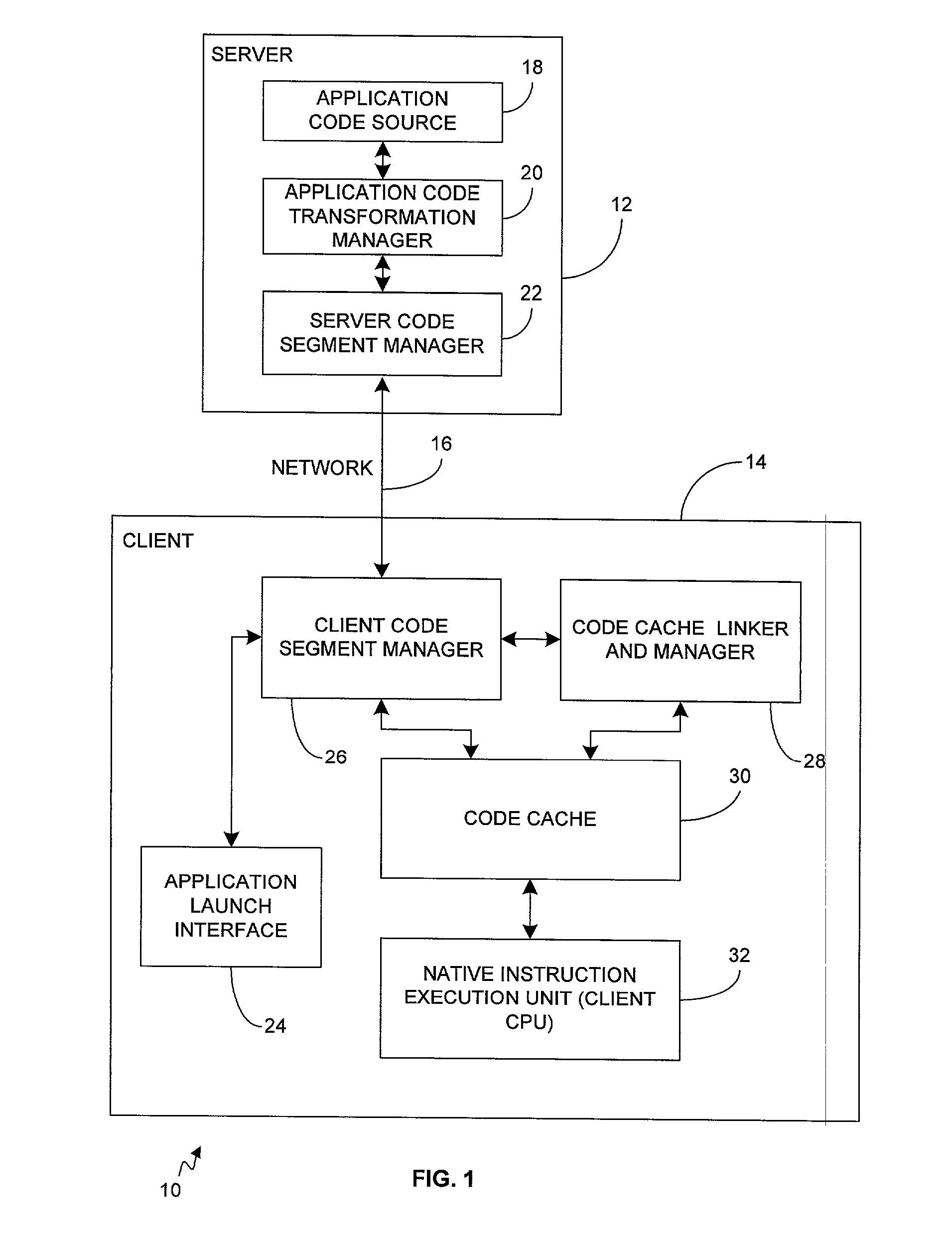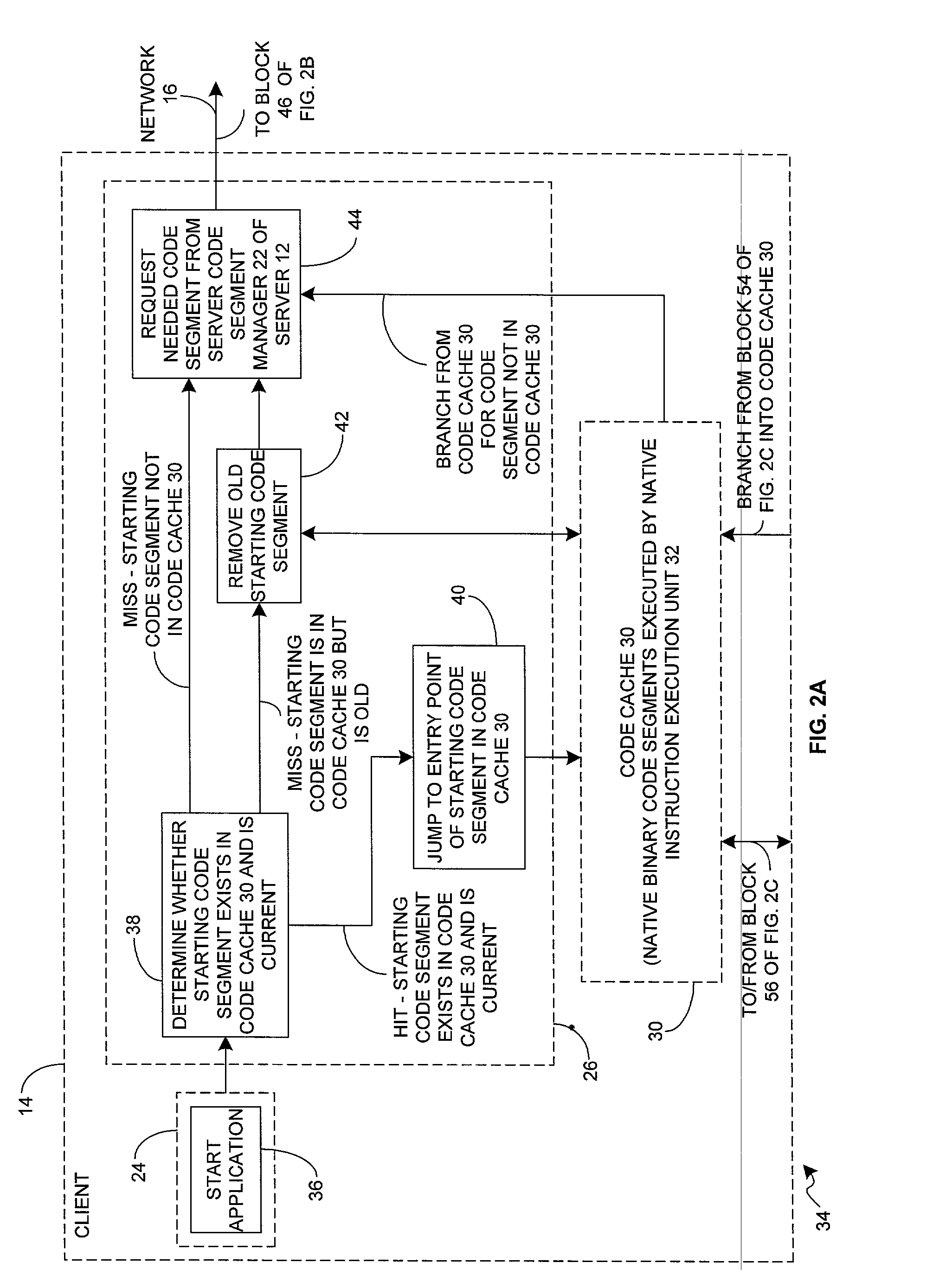Networked client-server architecture for transparently transforming and executing applications
a client-server and application technology, applied in the field of application execution, can solve the problems of large network size, less diverse network, and common malicious attempts to break into clients and servers, and achieve the effect of reliving the burden of application management and high scalabl
- Summary
- Abstract
- Description
- Claims
- Application Information
AI Technical Summary
Benefits of technology
Problems solved by technology
Method used
Image
Examples
Embodiment Construction
[0030]The present invention is a client-server architecture wherein an application resides on the server. When a client first seeks to execute the application, the server transmits native binary code segments to the client, which caches the segments in a code cache and executes the segments natively from the cache. The application source can be provided on the server in a variety of formats, such as a source code text format of a programming language, a native binary code format, or a virtual machine format. If the application source on the server is not in the native binary format of the client, then the server transforms the source into the native binary format required by the client. After the application begins executing on the client, when the application attempts to branch to a code segment that has not been cached, the client requests the code segment from the server, and the server transmits one or more additional code segments. The granularity of the code segments can be ea...
PUM
 Login to View More
Login to View More Abstract
Description
Claims
Application Information
 Login to View More
Login to View More - R&D
- Intellectual Property
- Life Sciences
- Materials
- Tech Scout
- Unparalleled Data Quality
- Higher Quality Content
- 60% Fewer Hallucinations
Browse by: Latest US Patents, China's latest patents, Technical Efficacy Thesaurus, Application Domain, Technology Topic, Popular Technical Reports.
© 2025 PatSnap. All rights reserved.Legal|Privacy policy|Modern Slavery Act Transparency Statement|Sitemap|About US| Contact US: help@patsnap.com



